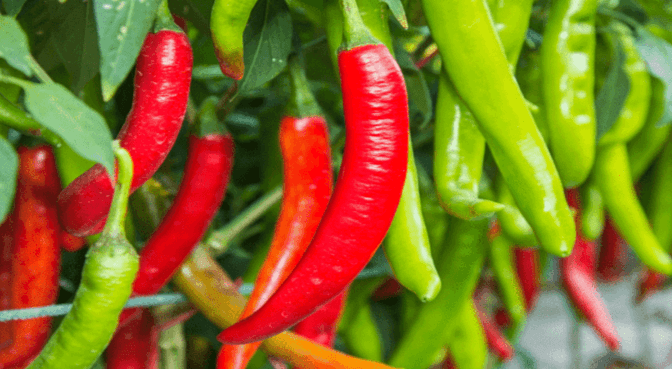wellhealthorganic.com:red-chilli-you-should-know-about-red-chilli-uses-benefits-side-effects

Introduction to Red Chilli
Red chilli peppers are more than just a staple spice in many kitchens; they are a powerhouse of flavors and health benefits. Known for their fiery heat and vibrant color, red chillies have a profound impact on culinary and medicinal practices worldwide.
What is Red Chilli?
Red chilli refers to the fruit of plants from the genus Capsicum, and it can be used fresh, dried, or powdered. The intensity of their heat is measured in Scoville Heat Units, which quantify the presence of capsaicin, the active chemical that provides the spicy flavor.
Historical Significance of Red Chilli in Global Cuisines
Originally cultivated in the Americas, red chilli has traversed global borders due to extensive trade, becoming a key ingredient in Indian, Chinese, Thai, and Mexican cuisines. Its adoption has reshaped many traditional dishes and culinary practices around the world.
Varieties of Red Chilli
There are numerous varieties of red chilli, ranging from mild bell peppers to fiery habaneros. Each variety offers a different level of heat and a unique flavor profile, making them versatile in cooking.
Nutritional Profile of Red Chilli
Red chillies are not only popular for their heat but also for their nutritional benefits. They are low in calories but high in vitamins and minerals.
Key Vitamins and Minerals in Red Chilli
Red chillies are rich in Vitamin C, Vitamin B6, Vitamin A, potassium, and iron. These nutrients are crucial for maintaining overall health and aiding various bodily functions.
Caloric and Macro-nutrient Content
A medium-sized red chilli contains about 18 calories. It provides carbohydrates and a small amount of protein and fiber, making it a great low-calorie option for adding flavor to dishes.
Antioxidants Present in Red Chilli
The bright red color signifies the presence of beta-carotene and other antioxidants, which are essential for fighting free radicals, reducing inflammation, and preventing chronic diseases.
Health Benefits of Red Chilli
Including red chillies in your diet can offer numerous health benefits due to their high nutrient and antioxidant content.
Boosts Metabolic Rate
The capsaicin in red chillies has been shown to boost metabolic rate, which can increase calorie burning and contribute to weight loss.
Enhances Circulatory Health
Capsaicin also promotes blood flow and reduces blood pressure, which can enhance circulatory health and reduce the risk of heart diseases.
Pain Relief and Anti-inflammatory Properties
Red chilli’s anti-inflammatory properties make it effective in pain relief treatments for conditions like arthritis and headaches.
Red Chilli and Immune System Enhancement
The high Vitamin C content helps strengthen the immune system, making it more effective in warding off infections.
Role of Capsaicin in Cancer Prevention
Some studies suggest that capsaicin may play a role in cancer prevention by killing cancer cells and reducing the spread of cancerous formations.
Culinary Uses of Red Chilli
Red chilli is a versatile spice that can be incorporated into numerous dishes to enhance flavor and add heat.
Traditional Recipes Featuring Red Chilli
From Indian curries to Mexican salsas, red chilli is a key ingredient that defines the identity of many traditional recipes.
Tips for Cooking with Red Chilli
When cooking with red chilli, it’s important to start with a small amount and adjust according to taste and heat preference. It can be added to marinades, sauces, and dressings to spice up any dish.
Pairing Red Chilli with Other Ingredients
Red chilli pairs well with ingredients like chocolate, lime, and coconut milk, which help balance its heat while enhancing its flavor.
Understanding the Side Effects of Red Chilli
While red chilli offers numerous benefits, it also comes with potential side effects, especially if consumed in excessive amounts.
Common Adverse Reactions
Some individuals may experience digestive discomfort, such as heartburn or upset stomach, especially if they are not accustomed to spicy foods.
Risk Factors and Precautions
People with irritable bowel syndrome or gastrointestinal disorders should limit their intake of red chilli. Always consult with a healthcare provider if unsure about the effects of red chilli on your health.
Managing Overconsumption Symptoms
Drinking milk or eating yogurt can help alleviate the burning sensation associated with capsaicin overconsumption. Avoid water, as it can spread the capsaicin and intensify the burning sensation.
Growing and Harvesting Red Chilli
Growing your own red chilli can be a rewarding experience, providing fresh spices right from your garden.
Best Practices in Cultivation
Red chillies require warm temperatures, plenty of sunlight, and well-draining soil. They should be watered regularly but be careful not to overwater.
Harvesting Techniques
Red chillies are typically ready for harvest when they are bright red and firm to the touch. They can be picked directly from the plant.
Post-Harvest Handling and Storage
After harvesting, red chillies can be dried or frozen to extend their shelf life. Drying is the most common method for preserving the flavor and heat of the chillies.
Read also wellhealthorganic.com : morning coffee tips with no side effect
The Economic Impact of Red Chilli
Red chilli not only spices up dishes but also the economies of many countries involved in its trade.
Red Chilli in the Global Spice Market
Red chilli plays a significant role in the global spice market, with countries like India, China, and Mexico leading in production and export.
Economic Benefits for Growing Regions
For many farmers in developing countries, growing red chilli offers a viable source of income due to the high demand in both local and international markets.
Trade and Export Trends
The demand for red chilli continues to grow, reflecting its popularity and versatility in cuisines around the world.
Red Chilli in Traditional Medicine
Red chilli’s benefits extend beyond the kitchen; it has been used in traditional medicine practices for centuries.
Use in Ayurveda and Traditional Chinese Medicine
In Ayurveda, red chilli is used to stimulate digestion and improve metabolism. In Traditional Chinese Medicine, it is used to expel cold and revitalize the yang.
Modern Research Supporting Traditional Claims
Recent studies have validated some of the traditional uses of red chilli, particularly its effects on metabolism and pain relief.
Read also wellhealthorganic.com:ayurveda-dinner
Integrating Red Chilli into Daily Health Routines
Incorporating red chilli in moderate amounts into daily meals can help leverage its health benefits while minimizing potential side effects.
DIY Projects with Red Chilli
Red chilli can also be used in various DIY projects, adding a touch of spice to your crafts and homemade remedies.
Making Homemade Red Chilli Powder
Drying and grinding red chillies can provide you with a year-round supply of fresh, potent red chilli powder.
Crafting Spicy Red Chilli Oils and Sauces
Infused oils and homemade hot sauces are great ways to preserve and enjoy the flavor of red chilli.
Decorative Uses of Red Chilli in Crafts
Dried red chillies can be used in wreaths and other decorative crafts, adding a rustic and colorful element to décor.
FAQs About Red Chilli
- How can red chilli enhance your diet? Red chilli can enhance your diet by adding flavor without the need for additional salt or fat, providing health benefits like increased metabolism and improved heart health.
- What are the top health benefits of red chilli? The top health benefits of red chilli include its ability to boost metabolism, aid in pain relief, reduce inflammation, and possibly prevent cancer.
- Are there any significant risks associated with red chilli? The main risks include digestive discomfort and potential exacerbation of certain health conditions like irritable bowel syndrome. It’s important to consume it in moderation.
- How do different cultures use red chilli in their cuisine? Red chilli is used in various forms across different cultures, from ground powders in Indian curries to whole peppers in Thai dishes and infused oils in Chinese cooking.
- What should you know before adding red chilli to your garden? It’s important to know that red chilli requires specific growing conditions including full sun, warm temperatures, and well-draining soil. Regular monitoring and care are essential for a healthy yield.
Conclusion
Red chilli is a fascinating and versatile ingredient that offers a plethora of benefits and uses. From its impact on health and cuisine to its economic and decorative uses, red chilli continues to be a valued spice worldwide. Whether you’re a culinary enthusiast or simply looking to add some spice to your life, understanding the comprehensive benefits and potential side effects of red chilli can greatly enhance your appreciation and use of this vibrant spice.





